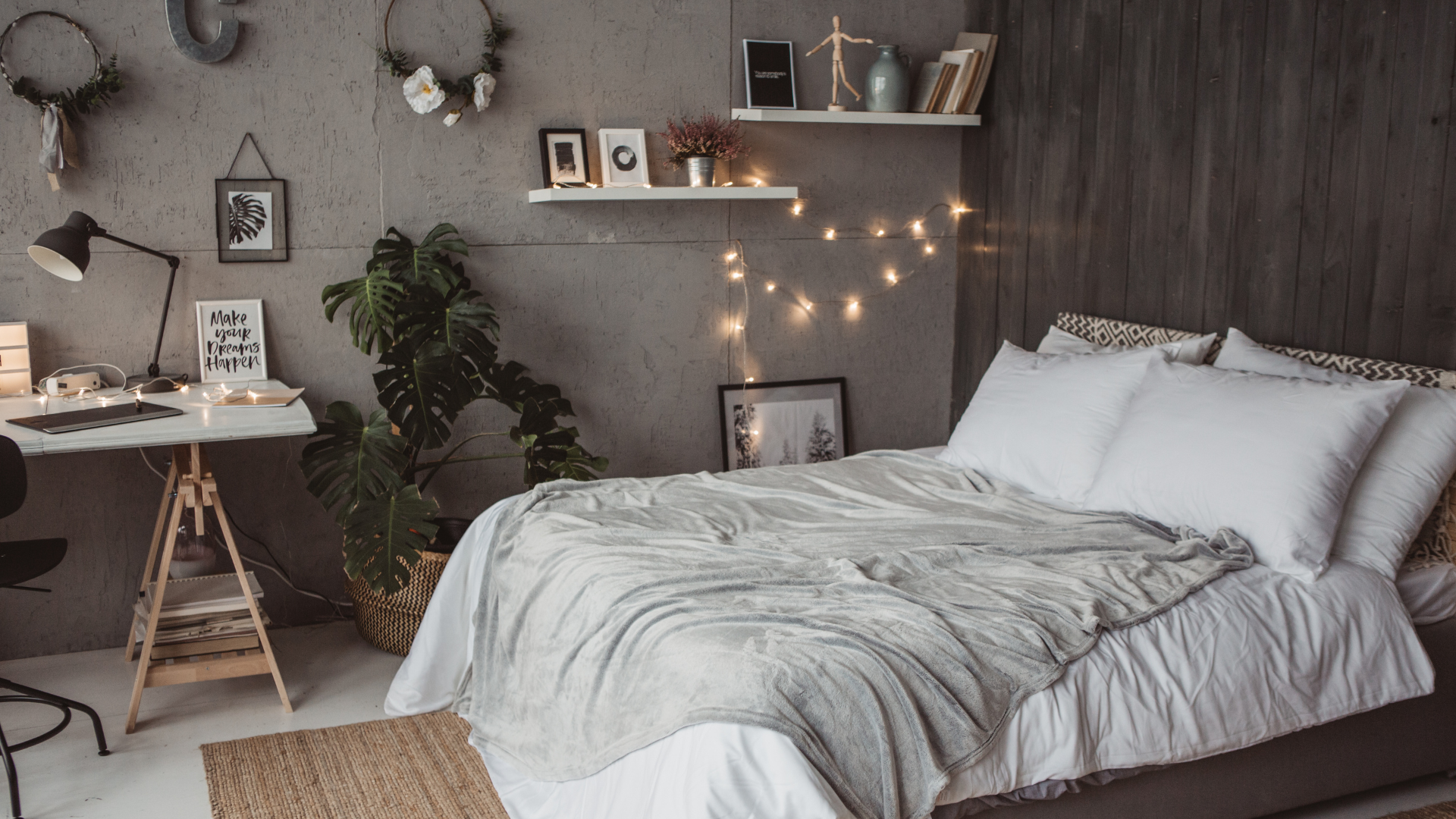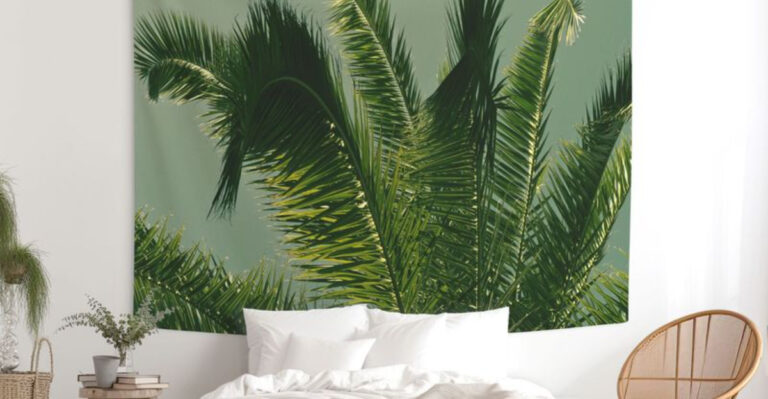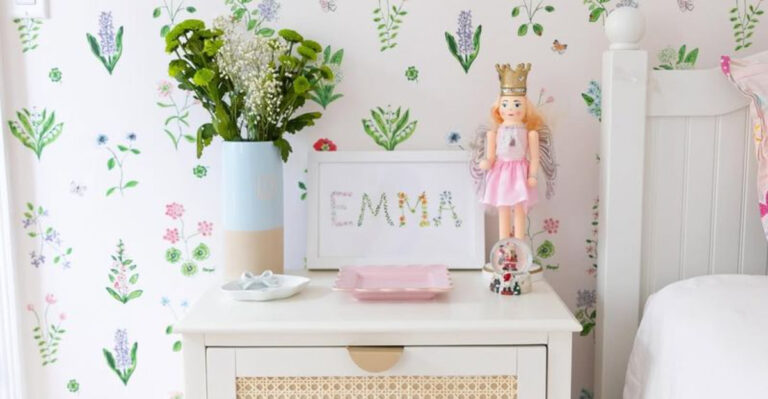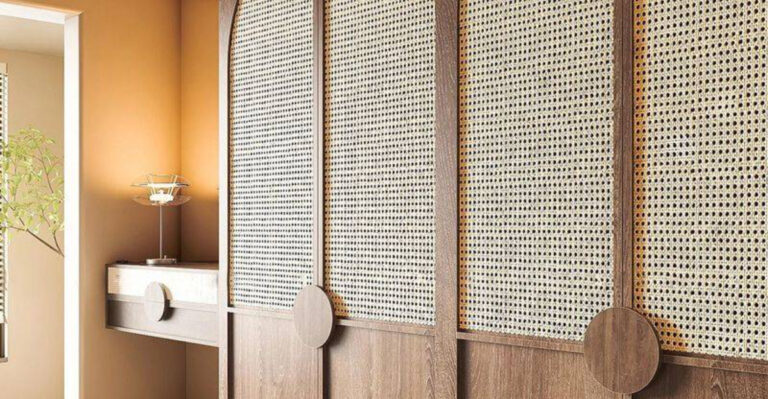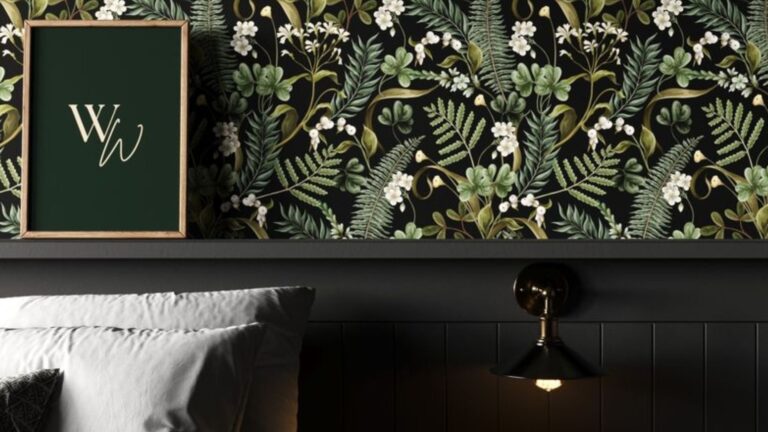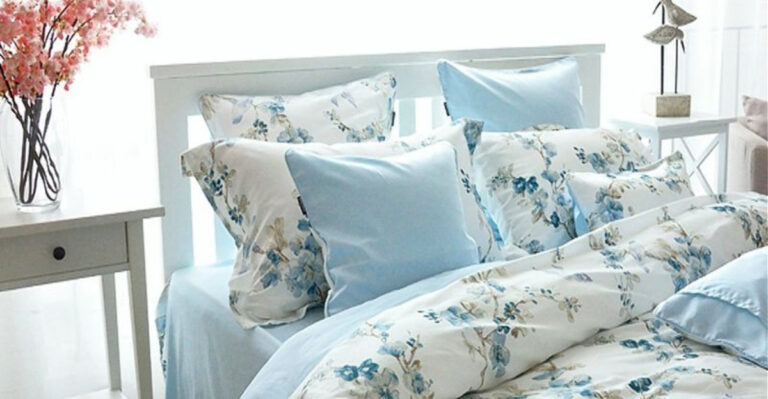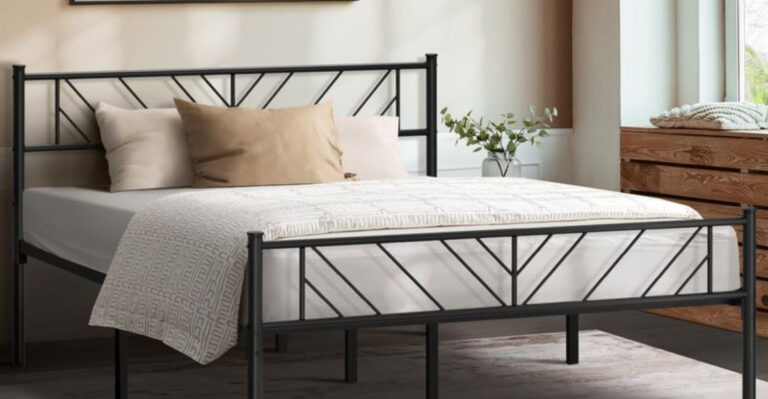30 Bedroom Design Mistakes You’re Making
Creating the perfect bedroom is more than just picking out a comfy bed and a trendy color. Trust me, I’ve learned the hard way that it’s a delicate mix of space, lighting, furniture, and those little personal touches.
Whether you’re starting fresh or giving your old room a facelift, avoiding common design mistakes can make all the difference. I’ve been there.
Awkward furniture layouts, harsh lighting, and too many throw pillows (yes, it’s a thing). I’m sharing 30 design pitfalls that might be ruining your sanctuary.
1. Skipping proper lighting layers
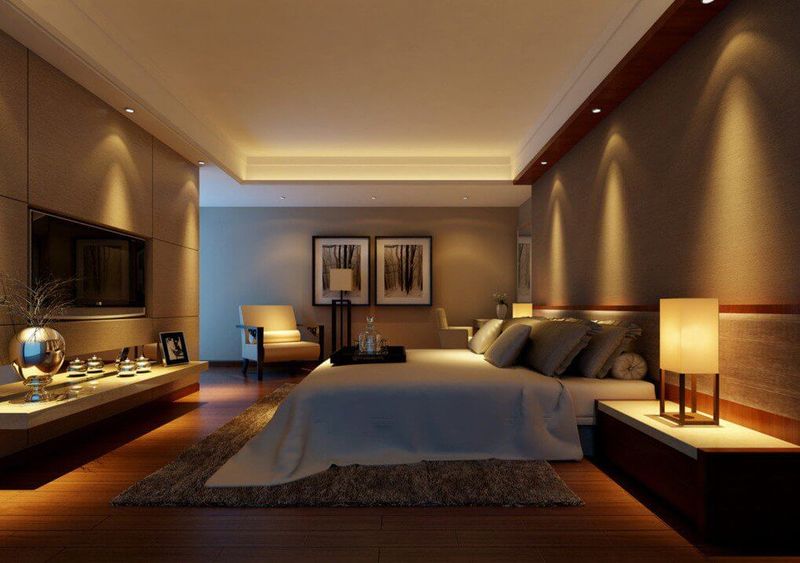
Lighting makes a world of difference in a room’s ambiance. It’s often overlooked that bedrooms need multiple lighting layers which include ambient, task, and accent lights.
One overhead light won’t cut it if you want a space that feels warm and welcoming. With only an overhead fixture, shadows can create an uninviting atmosphere.
Consider a combination of lamps, sconces, and dimmers which offer flexibility. This doesn’t just brighten the space, it enhances the mood and functionality.
2. Choosing the wrong bed size
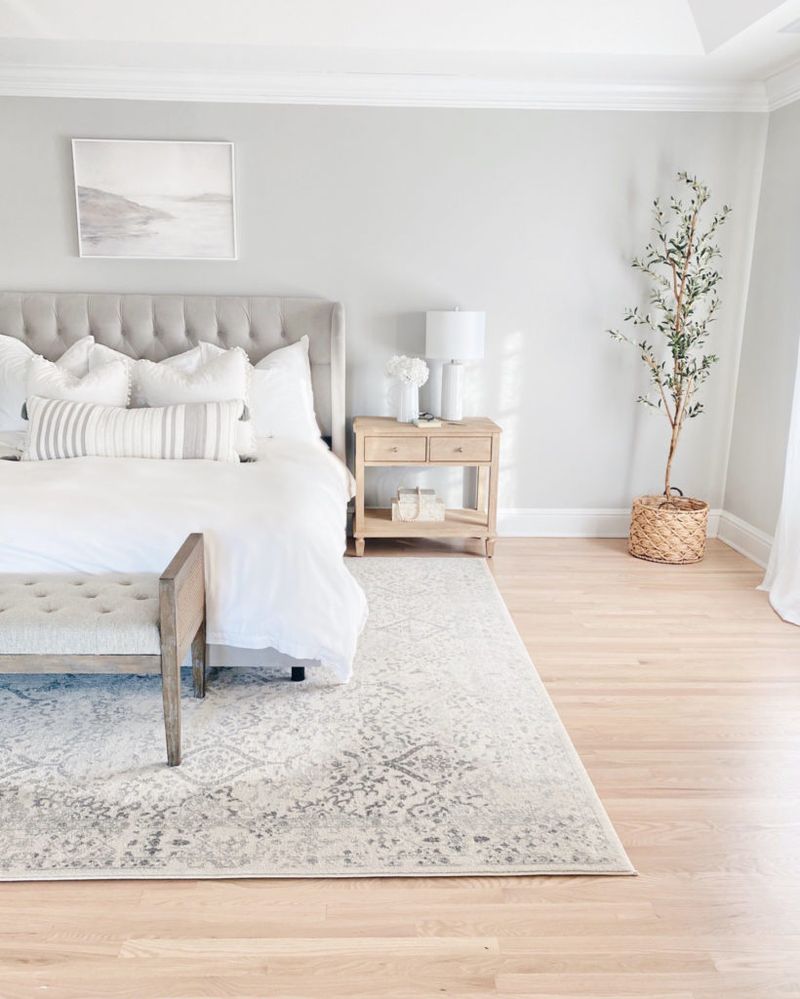
Floor space defines how comfortable your room feels. A bed too large for the room can make it appear cramped or unbalanced.
Bedrooms should allow easy movement which means the bed size should complement the room’s dimensions. If getting around the bed becomes a workout, it may be time to reconsider the size.
Look for a bed that offers enough sleeping space without overwhelming the room’s layout. By balancing bed size with available space, you maintain fluidity and comfort in your restful retreat.
3. Overcrowding with furniture
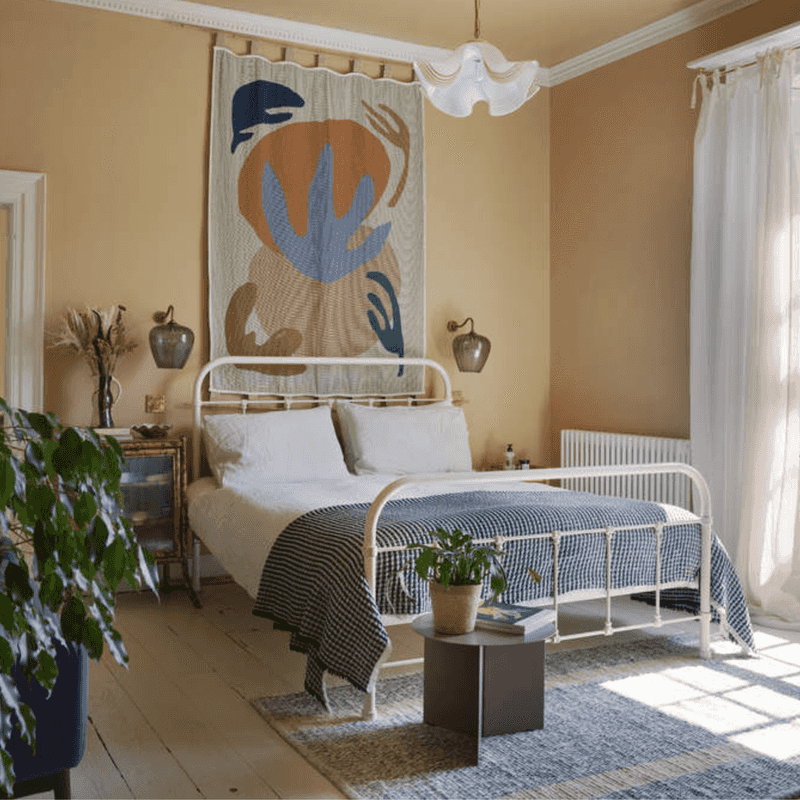
Less can indeed be more when it comes to bedroom furniture. Filling a room with too many items results in a cluttered atmosphere which affects relaxation.
It’s crucial to prioritize essential pieces that serve a purpose and enhance the room’s aesthetics. Navigating through a forest of furniture can be tiring.
Avoid unnecessary additions and focus on functionality. This approach creates a breathable space that feels both open and inviting which fosters relaxation and tranquility.
4. Neglecting symmetry
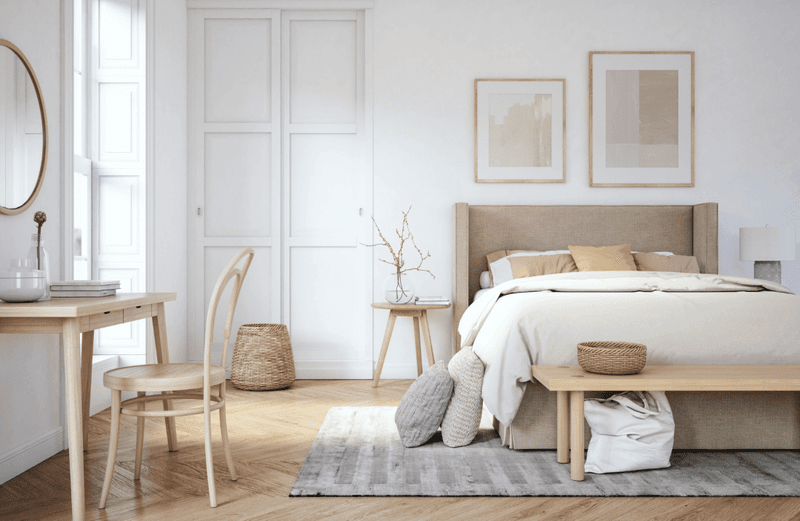
Our brains love balance and harmony. An asymmetrical arrangement may leave a room feeling off-kilter or chaotic which affects the overall vibe.
Symmetry in furniture placement promotes a sense of order and calm. Whether it’s matching bedside tables or aligning artwork, maintaining balance can be visually pleasing.
Implementing symmetry doesn’t mean everything must match exactly; it’s about achieving equilibrium. This thoughtful arrangement can transform your room into a harmonious haven.
5. Using mismatched furniture
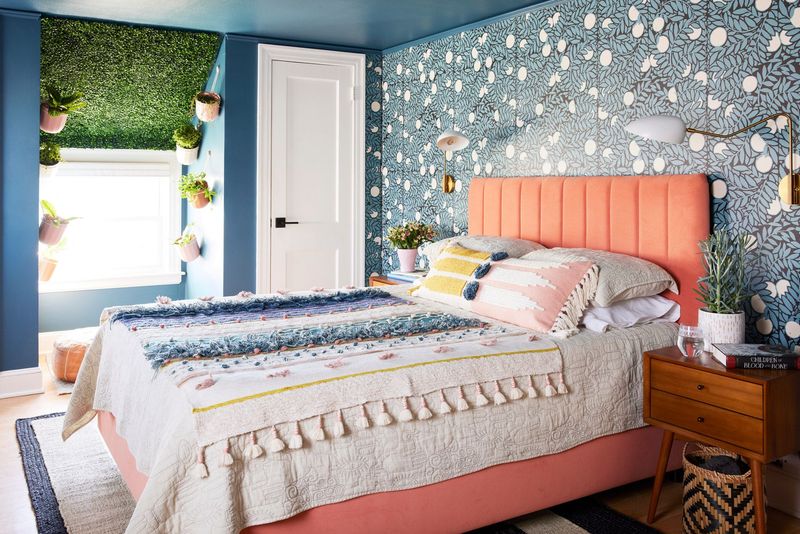
Eclectic styles can appear charming yet mismatched furniture can also create conflict in design. A hodgepodge of styles might confuse the eye rather than please it.
Mismatched doesn’t have to mean chaotic which is the key. Achieving a cohesive look involves mixing styles thoughtfully and harmoniously.
Choose pieces that complement each other or share a common element. This way your room feels cohesive without appearing contrived which enhances the overall aesthetic.
6. Not considering scale and proportion
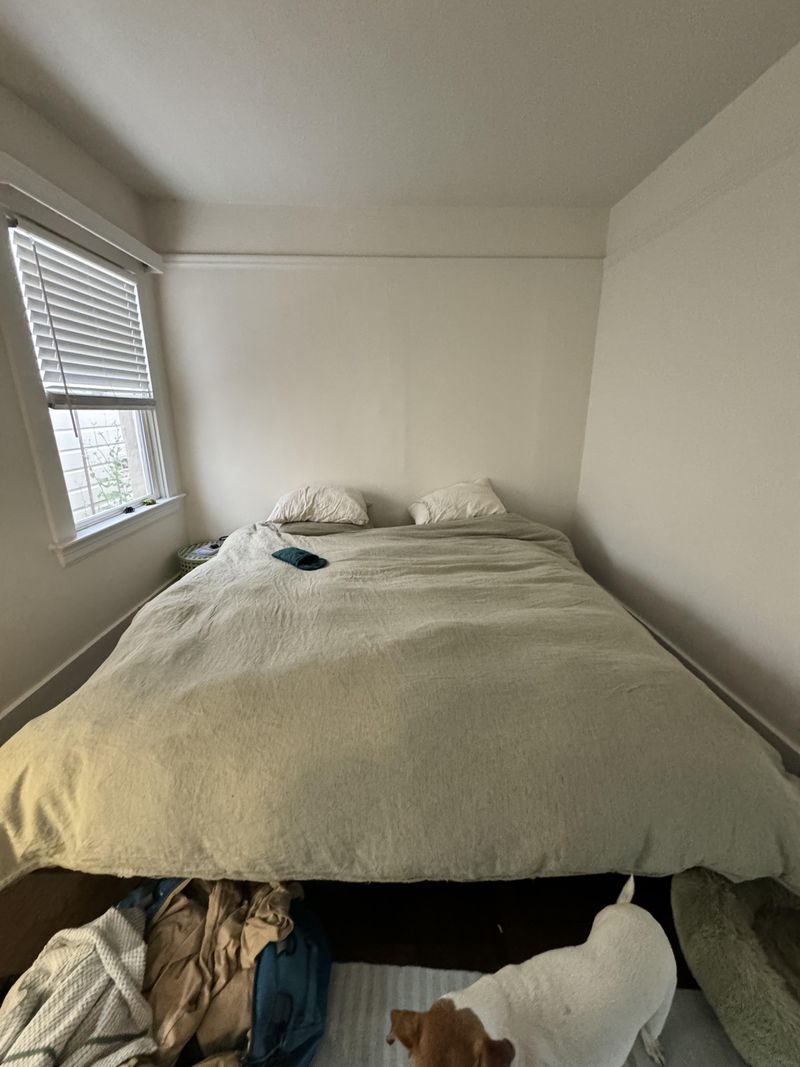
Every element in a bedroom should fit like a puzzle. Oversized furniture can dwarf smaller spaces which make them look more cramped than cozy.
It’s important to consider the scale and proportion of each piece. Furniture should fit the room’s dimensions and complement the overall design.
A well-proportioned room feels balanced and inviting which provides a sense of comfort and space. Thoughtful consideration of scale can transform a room which makes it more functional and beautiful.
7. Hanging artwork too high
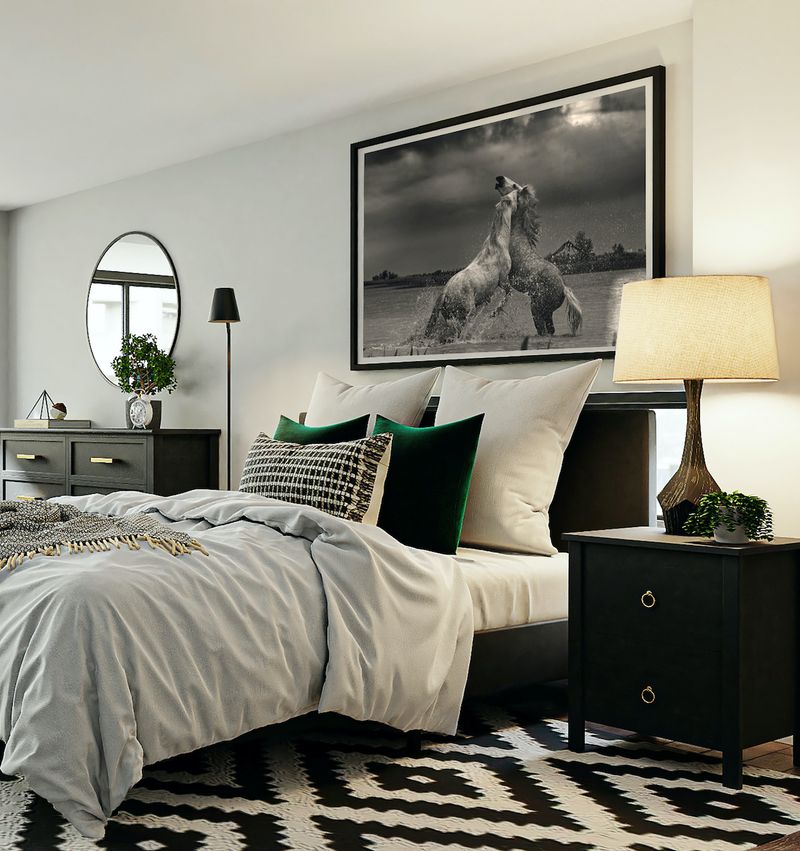
Art is meant to be enjoyed which means positioning is key. Hanging artwork too high can lead to neck strain or missed appreciation.
Positioning art at eye level allows for effortless enjoyment. When art is unreachable, it loses its intended impact. Consider the average standing eye level which is typically about 57-60 inches from the floor.
This placement ensures the artwork contributes to the room’s aesthetic without straining the viewer’s neck.
8. Ignoring color harmony
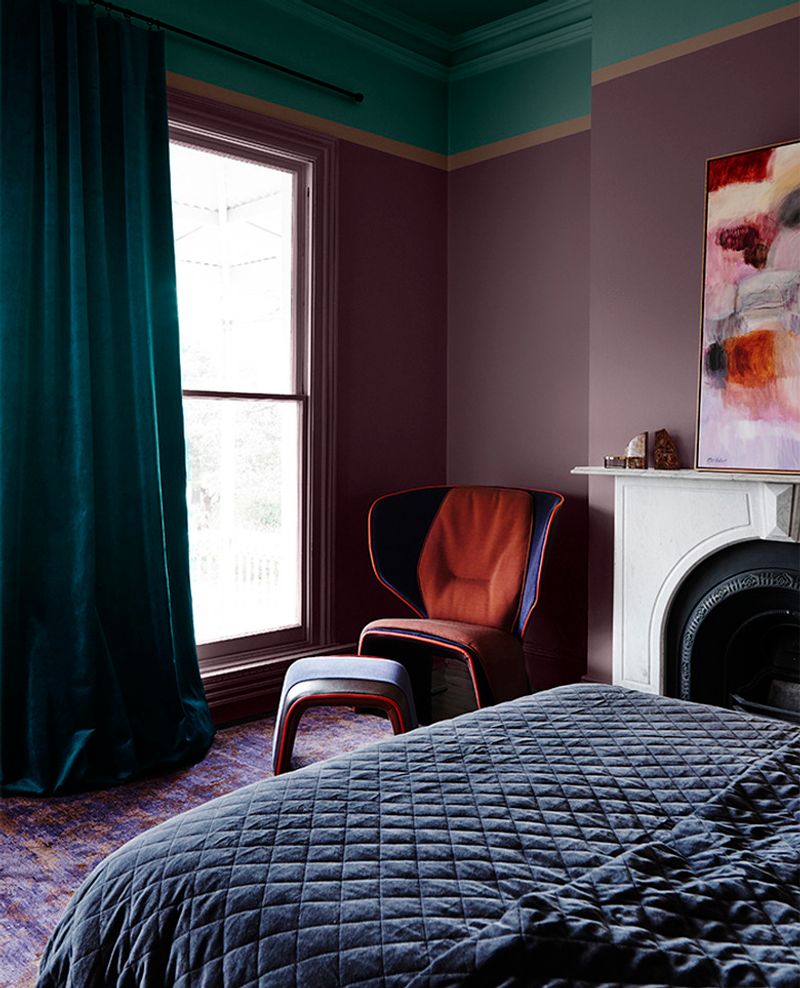
Colors can set the mood which is why harmony is essential. Clashing colors may lead to visual chaos which affects relaxation and sleep.
Choosing complementary hues creates a balanced and peaceful environment. Colors should work together to bring a sense of calm and unity.
Consider a color palette that reflects your personality while maintaining a cohesive look. This thoughtful selection makes a bedroom feel classy which enhances rest and relaxation.
9. Overusing dark colors
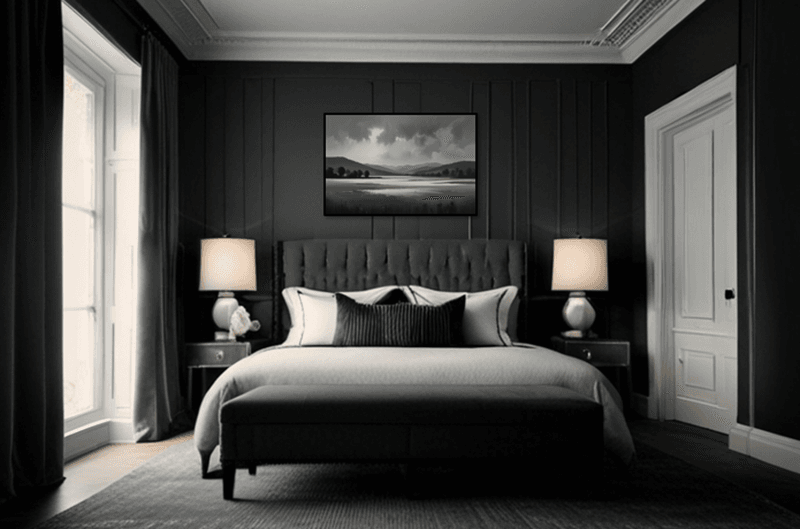
Dark colors can add drama yet they can also overwhelm a space if used excessively. A bedroom engulfed in dark tones can feel gloomy or smaller than it is.
Balance is crucial when incorporating dark hues. Pair dark colors with lighter elements to create contrast and interest. This ensures the room feels cozy without being oppressive which enhances the atmosphere.
Thoughtful use of color transforms the space into a stylish yet inviting retreat.
10. Forgetting storage options
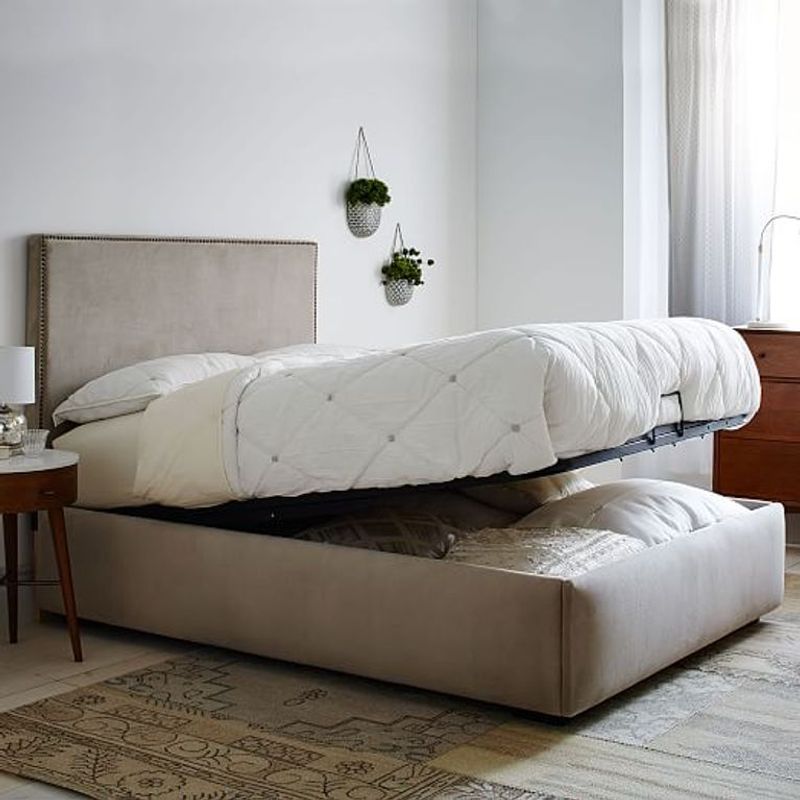
Clutter has a way of sneaking up on us which is why storage is essential. Lack of storage can lead to a messy bedroom which affects relaxation.
Incorporating smart storage solutions keeps clutter at bay. Think beyond traditional dressers or closets. Consider under-bed storage or multi-functional furniture that offers hidden compartments.
These solutions maintain order and simplicity which make the room feel spacious. A tidy bedroom enhances relaxation and sleep quality.
11. Choosing uncomfortable bedding
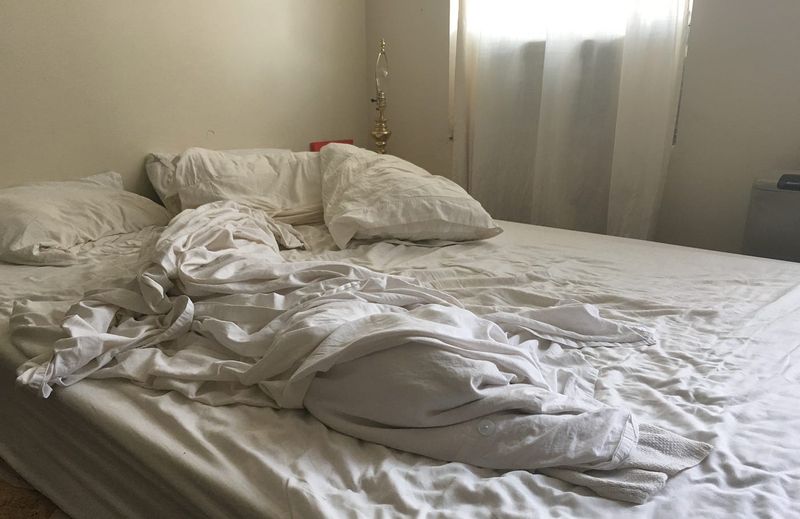
Comfort should be the priority in any bedroom. Uncomfortable bedding can lead to restless nights which affects your health and mood.
Investing in quality sheets and pillows enhances sleep quality. Focus on materials that feel soft and breathable. Cotton or linen are popular choices that offer comfort and durability.
Bedding should invite relaxation which contribute to a better sleep experience. Don’t compromise on comfort. It’s worth the investment.
12. Not focusing on the focal point
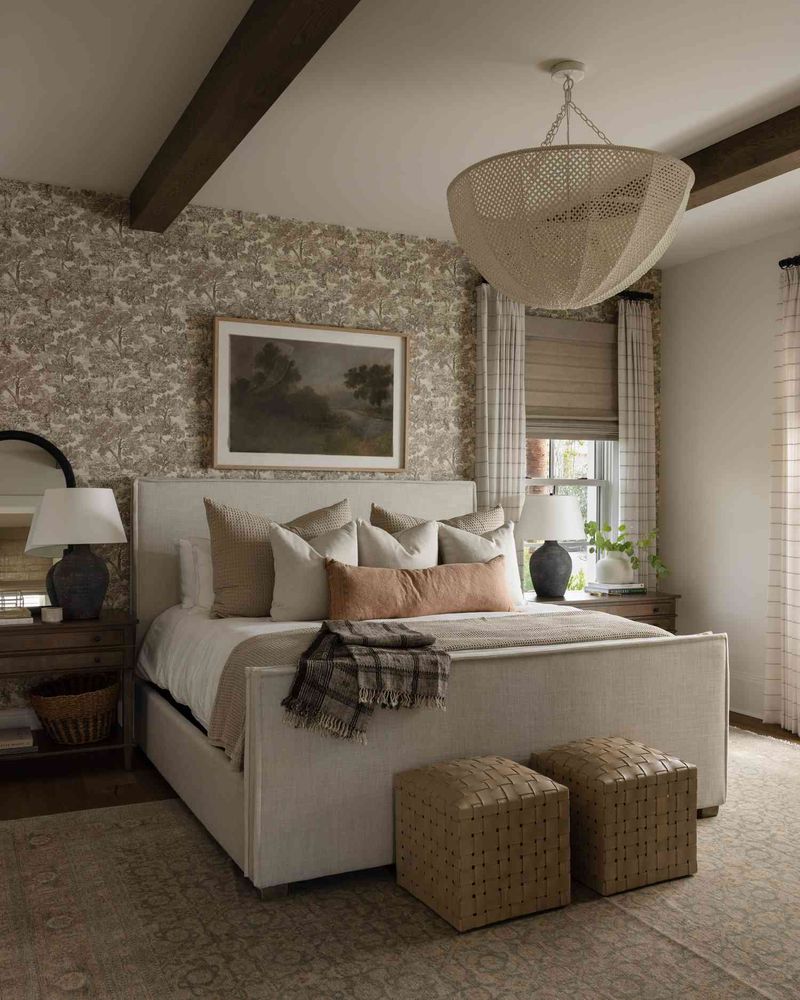
Every well-designed room needs a focal point which draws the eye. Without it, a space can feel scattered or aimless. Beds often serve as a natural focal point given their size and use.
If the room lacks focus, try anchoring the design with a statement piece. It could be a bed, an artwork, or even a window view. This gives the room direction and purpose which enhances its overall design.
13. Poor furniture placement
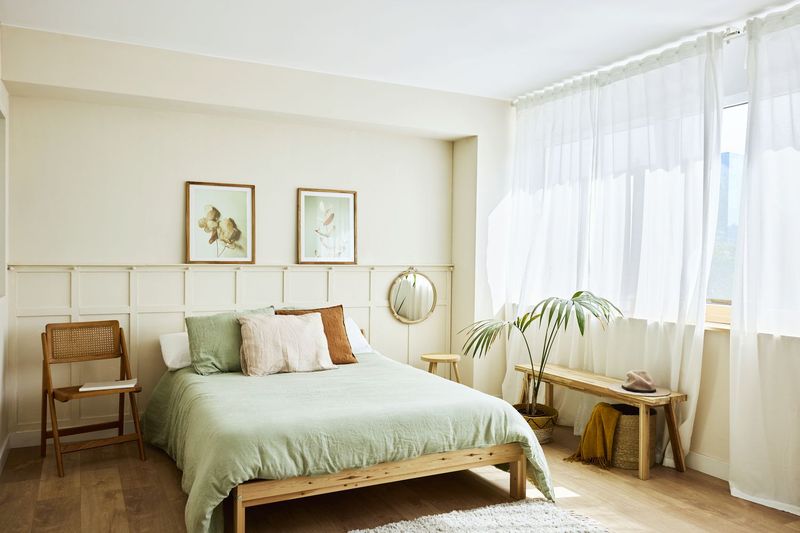
Furniture placement impacts a room’s flow. Poor placement can make a space feel cramped or awkward which disrupts relaxation.
Ensuring easy access and movement is crucial for functionality. Consider traffic patterns and avoid blocking pathways with large items.
Thoughtful arrangement maximizes space and convenience. This invites a harmonious flow which allows for seamless movement and a welcoming atmosphere.
14. Overdecorating with accessories
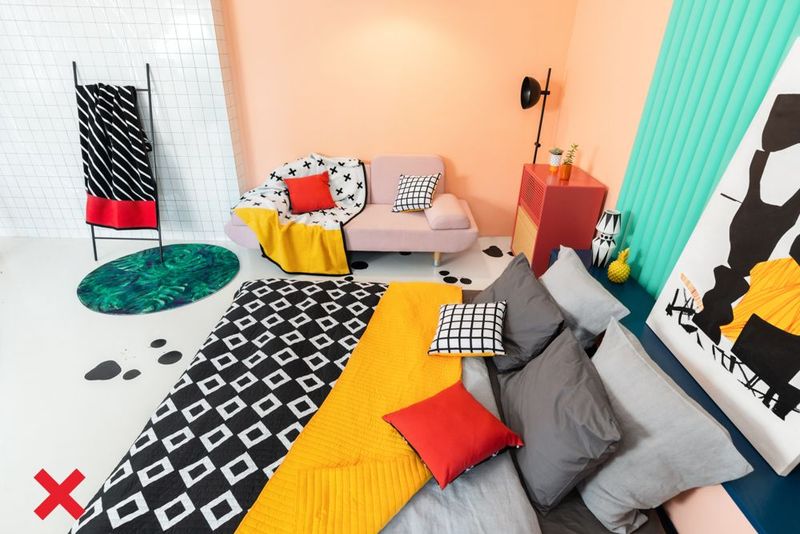
Less is often more when it comes to decorating. An overload of accessories can clutter a bedroom which diminishes its relaxing vibe. The room should showcase personality without overwhelming it.
Select a few meaningful pieces that reflect your style. Quality over quantity allows each item to shine. This approach ensures a balanced look which creates a serene and personalized space.
15. Using outdated or worn-out furniture
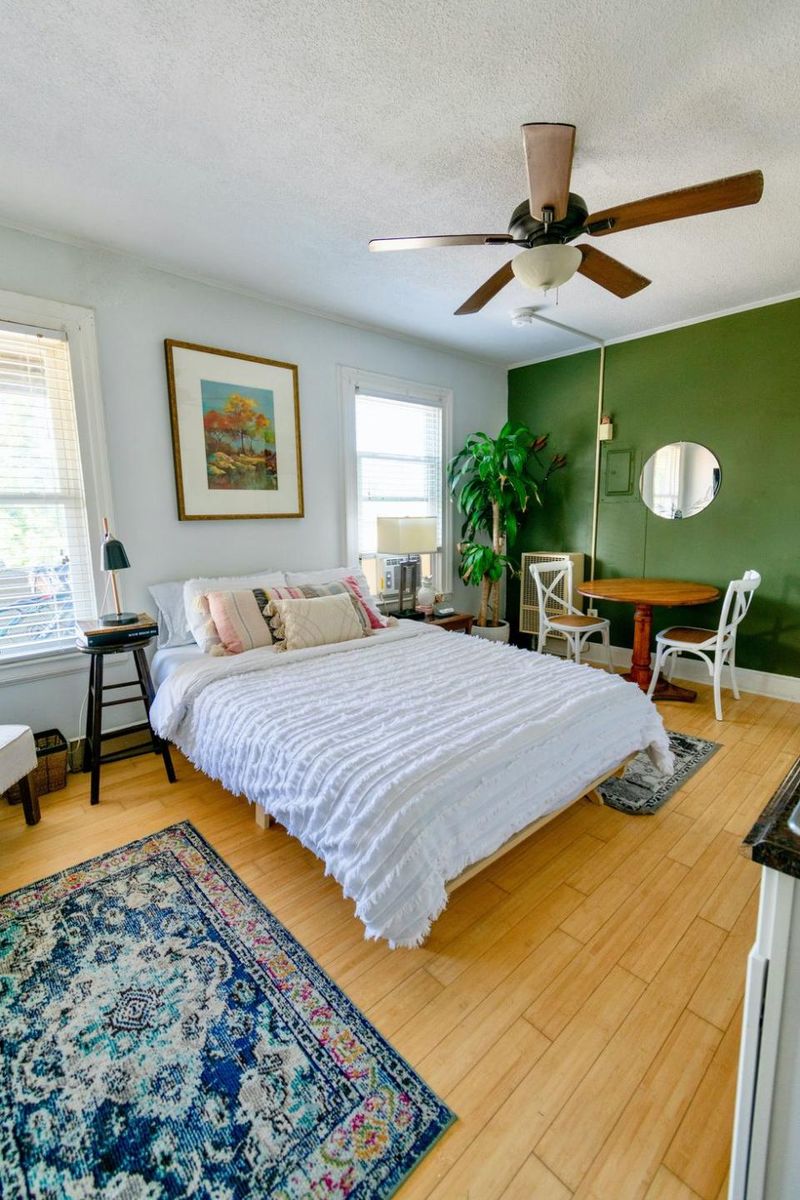
Furniture has its lifespan which affects the room’s appearance. Outdated or worn-out pieces can detract from the overall aesthetics.
Updating furniture breathes new life into the space. Consider replacing pieces that no longer serve their purpose or fit the style.
You don’t need to splurge. A little refresh with paint or upholstery can work wonders. This rejuvenates the room which makes it feel modern and inviting.
16. Overloading the nightstand

Nightstands are handy yet overloading them can lead to chaos. A cluttered nightstand distracts from relaxation which interferes with the calming atmosphere.
Balance functionality with simplicity. Limit items to essentials like a lamp, book, or alarm clock. Keep it tidy and organized which promotes tranquility.
A neat nightstand contributes to a peaceful sleep environment which enhances rest and relaxation.
17. Skimping on quality mattress
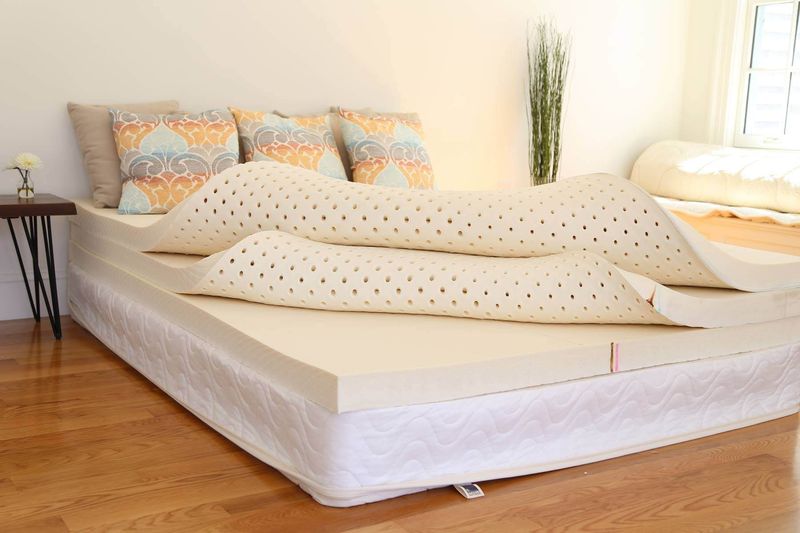
A mattress can make or break sleep quality. Skimping on a quality mattress may lead to discomfort or back pain. Investing in a good mattress positively affects health and well-being.
Choose one that supports your body and sleeping habits. Consider factors like firmness and material. A quality mattress is an investment in restful sleep which enhances daily energy and mood.
Prioritize comfort and support which transforms your bedroom into a sanctuary.
18. Leaving windows uncovered
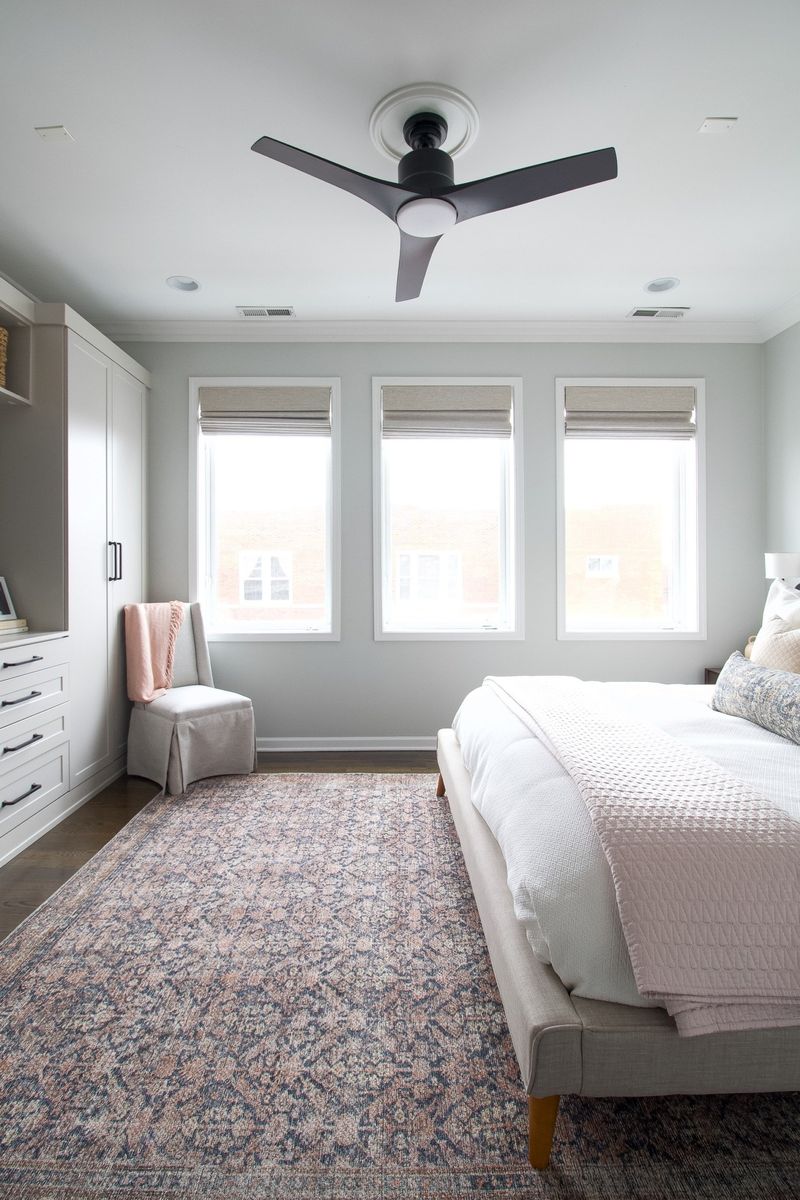
Natural light is a blessing which can become a curse without control. Uncovered windows lead to unwelcome light that disrupts sleep.
Consider window treatments for light management. Curtains or blinds offer flexibility and privacy. They enhance the room’s design while controlling light levels.
This creates a balanced atmosphere for rest and relaxation. A well-dressed window becomes both functional and aesthetically pleasing.
19. Failing to mix textures
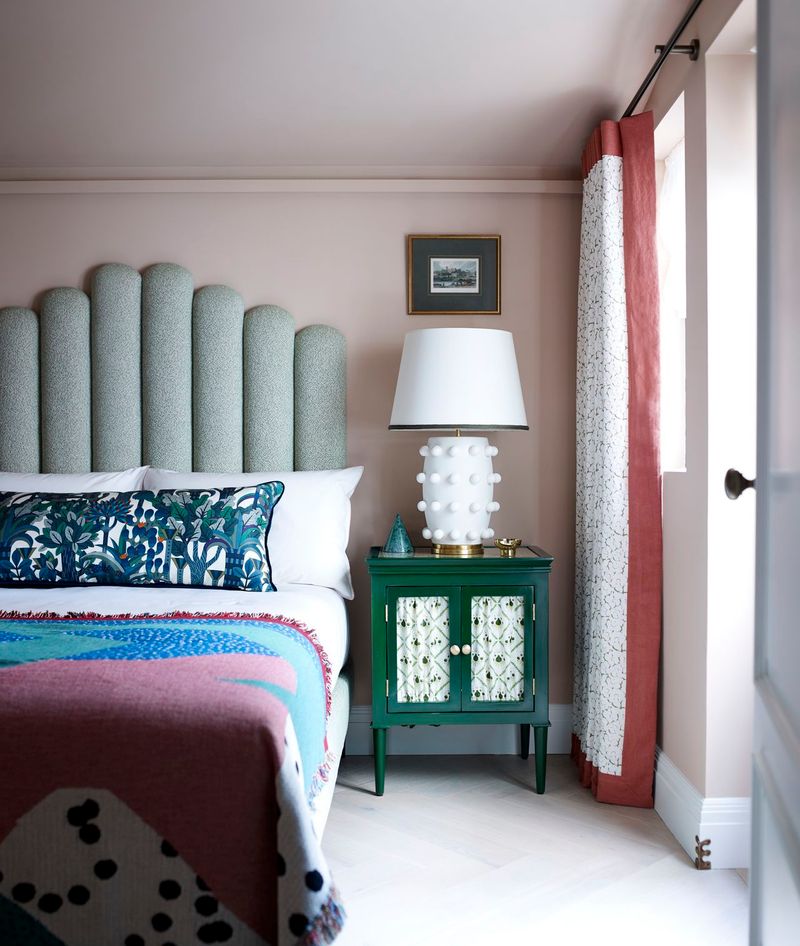
Texture adds depth and interest to any room. A lack of texture may lead to a flat or bland space. Mixing materials brings warmth and richness to the bedroom. Incorporate textiles like throws, rugs, or pillows.
Different textures create visual contrast and appeal. This thoughtful layering enhances the room’s character which makes it inviting and comfortable. Experiment with materials for a dynamic, cozy retreat.
20. Ignoring the importance of rugs

Rugs serve more than just a decorative purpose. Ignoring them can leave a room feeling cold or unfinished. Rugs offer warmth and comfort which anchor the space.
Choose a rug that complements the room’s style and size. It adds texture and color which defines separate areas within the room.
A well-placed rug completes the design which makes the bedroom cozy and cohesive.
21. Overusing patterns
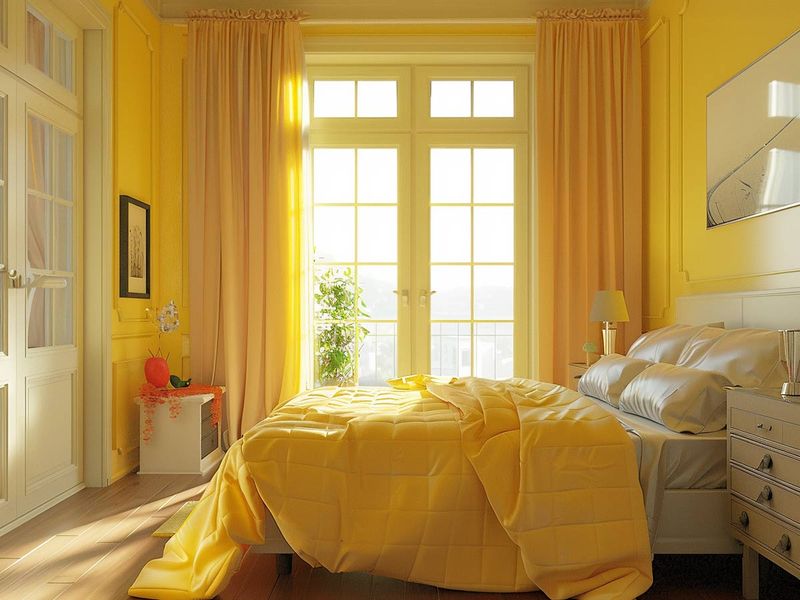
Patterns add personality yet too many can clash and overwhelm. An overabundance of patterns may lead to visual chaos.
Balance is key when incorporating designs. Select patterns that complement each other. Mixing different scales or styles should be done thoughtfully.
This ensures harmony and interest without being overpowering. A balanced approach to patterns enhances the room’s style and comfort.
22. Choosing impractical fabrics
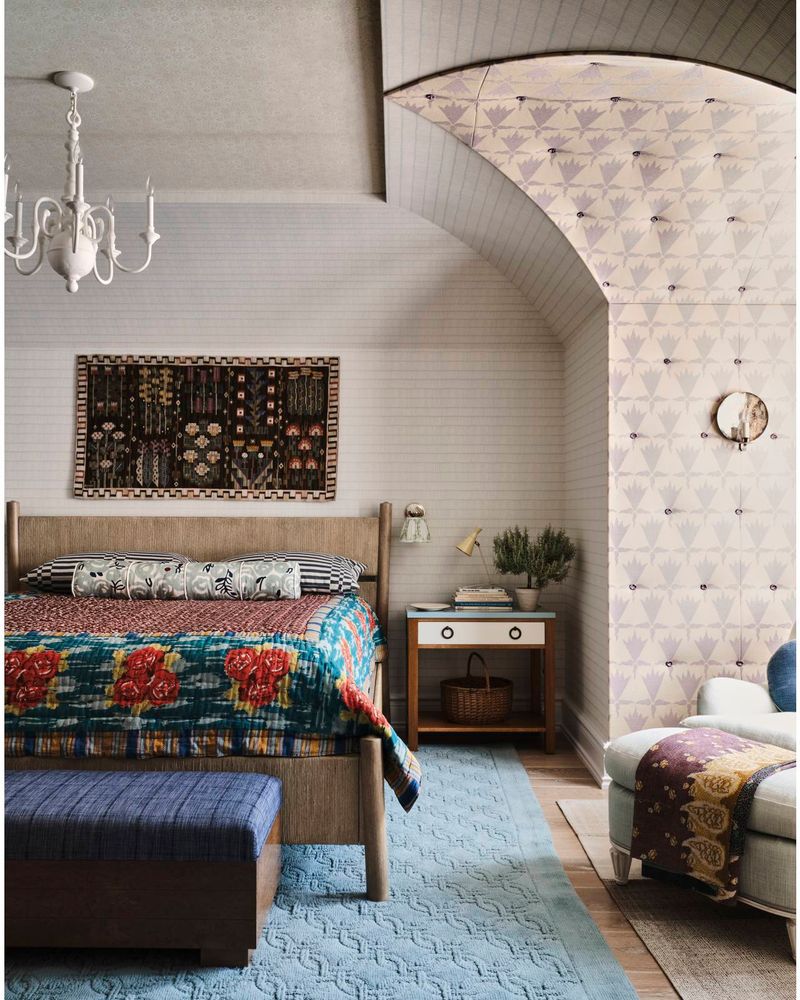
Fabrics impact both aesthetics and functionality. Impractical fabrics may look appealing yet they can be challenging to maintain. Choose materials that fit your lifestyle. Consider durability and ease of cleaning.
Fabrics should reflect your daily use and comfort needs which make them practical and stylish. Thoughtful fabric selection ensures longevity and beauty in your bedroom design.
23. Not balancing light and dark elements

Contrast creates interest yet imbalance between light and dark elements can disrupt harmony. A space that’s too heavy on one side may feel off-kilter. Balance light and dark for visual appeal.
Use lighter elements to open up space and darker accents for depth. This creates a dynamic yet balanced atmosphere that enhances style and comfort. Thoughtful contrast makes the room feel inviting.
24. Overlooking the ceiling
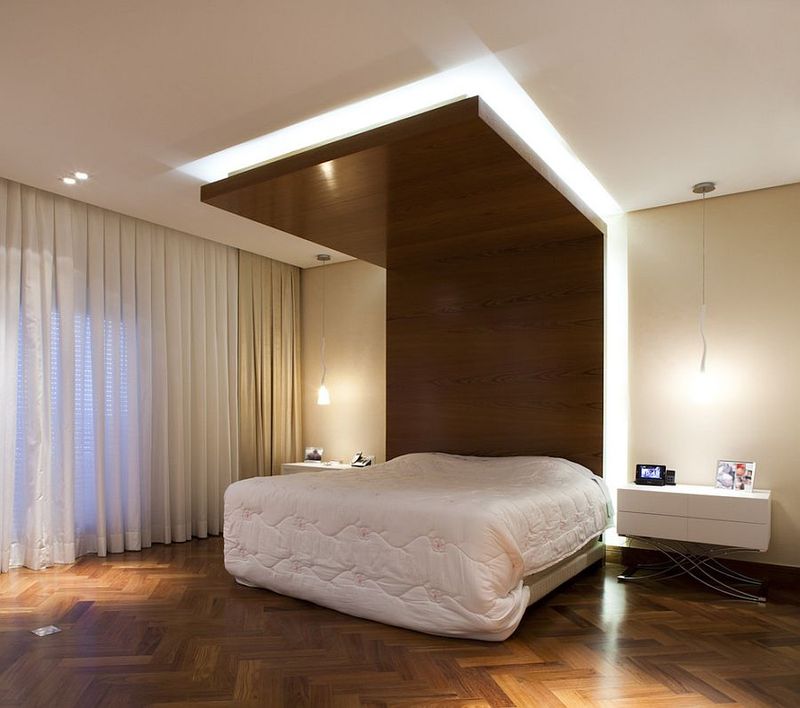
The ceiling is often neglected which misses an opportunity for creativity. Overlooking it can lead to a bland design. Adding visual interest to the ceiling enhances the room’s appeal.
Consider paint, wallpaper, or architectural elements. A well-designed ceiling draws the eye and adds dimension. This thoughtful addition completes the room’s design which makes it unique and stylish.
25. Not using adequate closet space
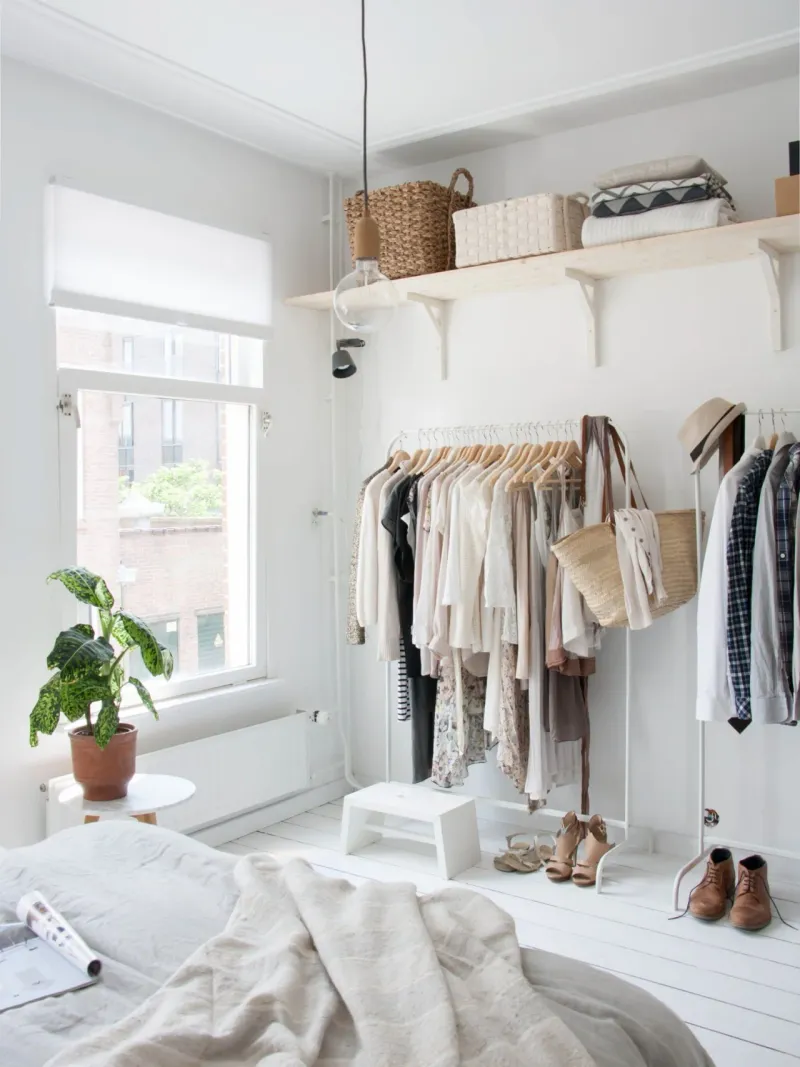
Closet space is precious which affects organization and aesthetics. Not utilizing it fully leads to clutter and chaos.
Maximize your closet’s potential for a tidy room. Consider shelving, baskets, or organizers to enhance space. Efficient use of closets keeps items accessible and orderly.
This maintains a clean and classy environment which makes the bedroom functional and stress-free.
26. Choosing the wrong wall paint
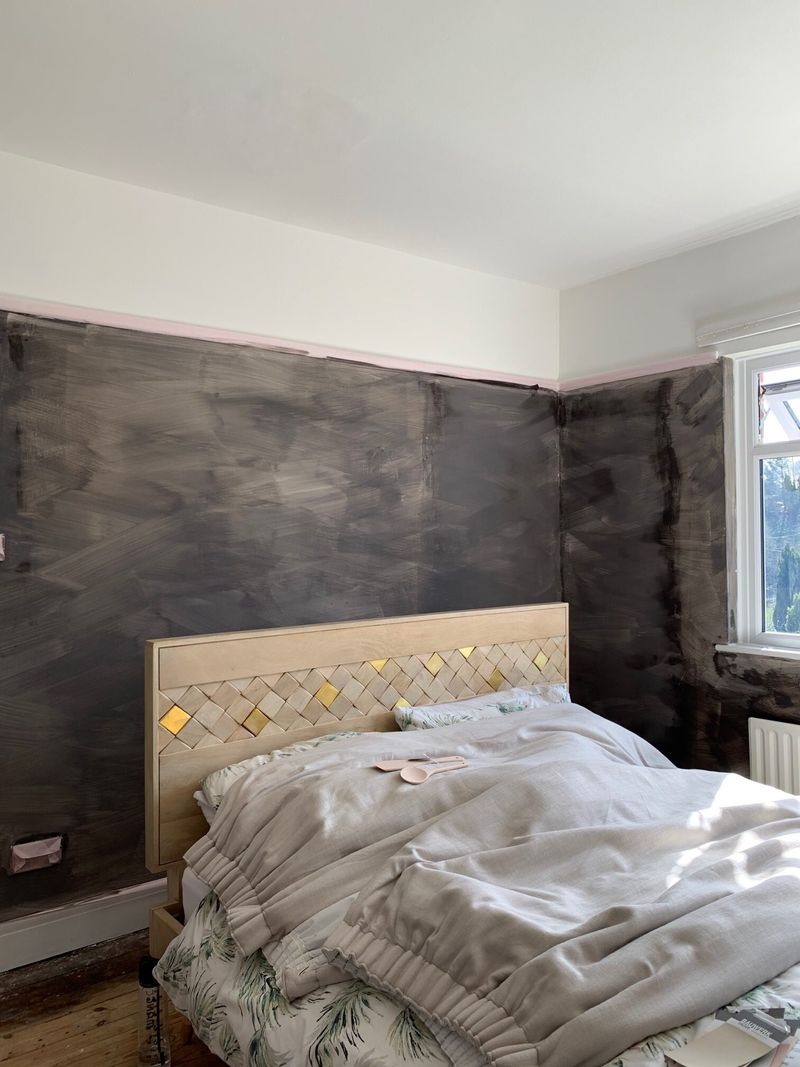
Wall color sets the tone which impacts the room’s mood. The wrong shade may clash with other elements or feel unwelcoming. Choosing the right paint enhances the room’s atmosphere.
Consider the room’s lighting and existing decor. Test samples before committing to a color. This thoughtful selection creates harmony which makes the space feel inviting and comfortable.
27. Clashing furniture styles
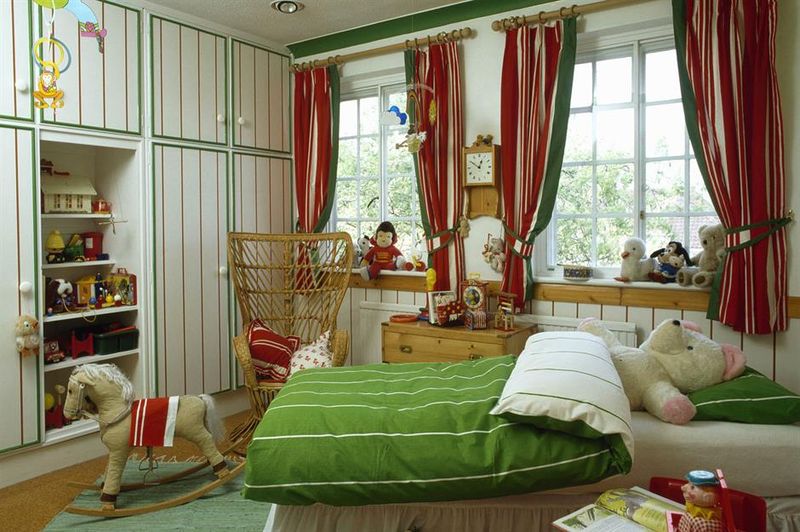
When it comes to furniture, consistency is key. Think of it like a good playlist, where every track flows nicely into the next. If your furniture styles clash, it’s like playing a rock song next to a lullaby.
Mixing styles can be great, but it takes a little finesse. The trick is finding common threads that tie everything together.
You want a cohesive vibe, but with enough flexibility to keep things interesting. This way, you end up with a space that feels put together yet totally reflects your unique style.
28. Avoiding accent walls altogether
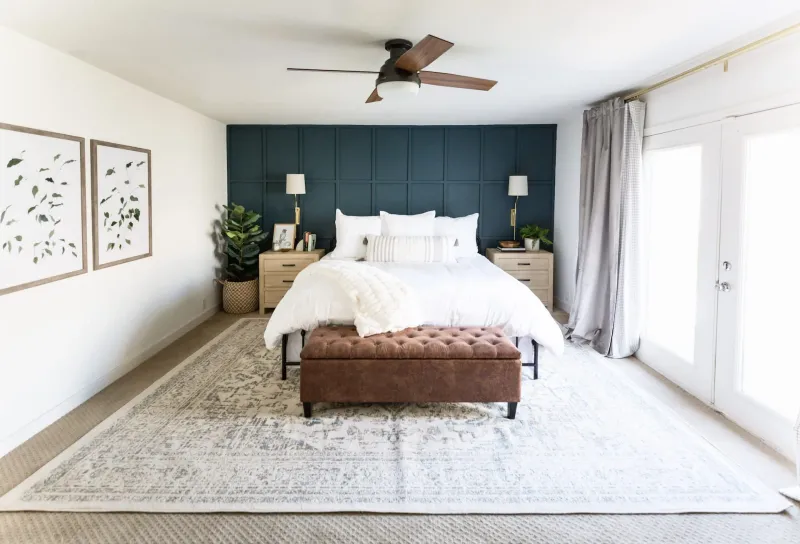
Not playing attention to your accent walls might leave them looking a bit…meh. They give you the perfect opportunity to play with bold colors or fun patterns without going overboard.
It’s a great way to add depth and make your space feel more dynamic, but without overwhelming the whole room. When done right, an accent wall isn’t just a design trick.
It’s the little detail that brings the whole room to life. Just make sure it doesn’t start competing with the furniture!
29. Not personalizing the space
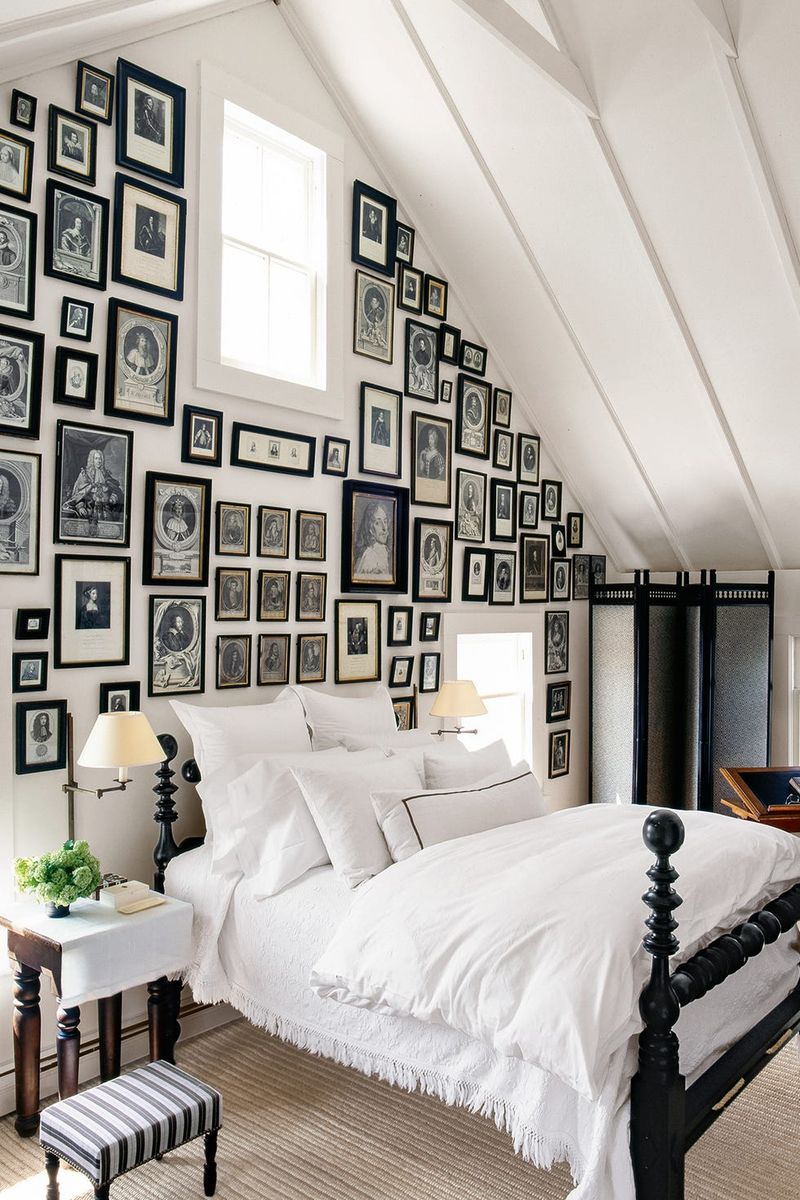
Personal touches are what turn a room from “meh” to “wow, this feels like me!” Without them, your space might feel a little cold or like a showroom.
Adding things that reflect your style, whether it’s photos, artwork, or quirky mementos, gives the room personality and warmth.
These little details make a huge difference, turning a generic room into a cozy sanctuary that feels uniquely yours. So go ahead, let your personality shine and your room will thank you for it!
30. Forgetting about air circulation
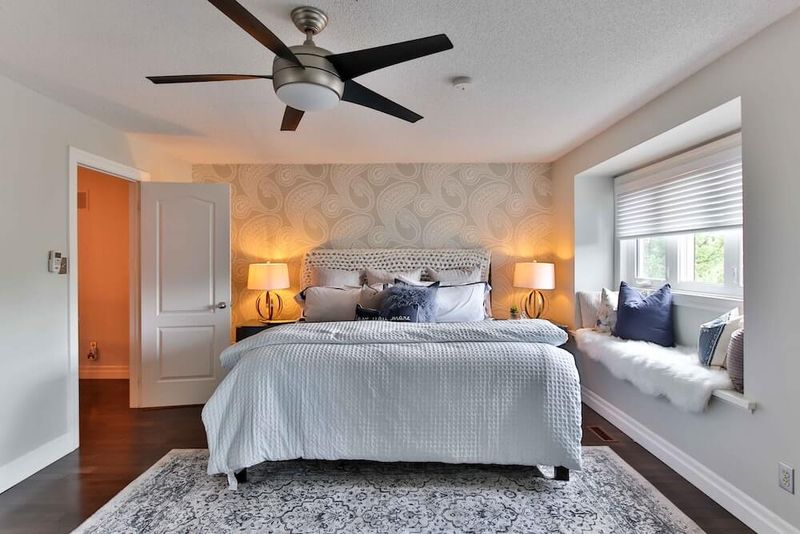
Good airflow is like the secret ingredient to a comfy room. Without it, things can get stuffy and, well, a little unpleasant. If the air’s not moving, your room can start feeling like a closed box.
So, crack a window or turn on a fan to get that breeze going! Not only does it help with comfort, but it’s also better for your health.
Proper ventilation turns your bedroom into a fresh, breathable retreat. No one wants to sleep in a room that feels like a hot yoga studio, right?

